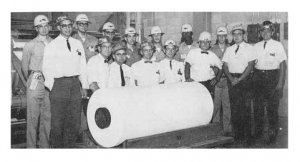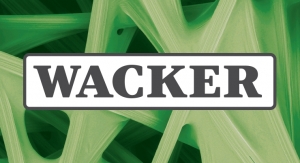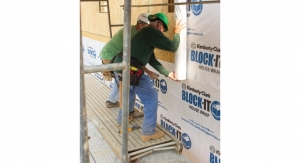07.31.17
In the fiber industry, nano fibers are materials made up of conventional and newly emerging polymers and with end uses as a typical textile product. However, there is no commonly accepted definition of nano fibers. Some authors refer to nano fibers as materials with the diameter ranging from 100-500 nm, others consider filaments with the diameter less than 1 micron as nano fibers and some hold the opinion that nano fibers are materials with a diameters below 100 nm. Here, we will define nano fibers as fibers whose diameters measure 500 nm or less for convenience. And, we will use the term microfiber for fibers above 500 nm and less than 5 microns.
Because nano fibers have small pore size and large surface area, they are expected to bring value to applications where the properties such as sound and temperature insulation, fluid holding capacity, softness, strength, durability, luster, barrier property enhancement, and filtration performance are needed.
In particular, liquid and aerosol filtration could benefit greatly from the introduction of nano fibers, since these fibers will improve their performance significantly. Other applications of nano fibers include barrier fabrics, wipes, personal care, and pharmaceutical applications. Enormous applications of nano fibers are in nano catalysis, tissue scaffolds and optical engineering. Great potential have hollow and core-sheath nano fibers for optical and microelectronics application. The use of nano fibers in the air filtration media reduces the size of the caught particles and simultaneously increases the filter efficiency for all particle sizes.
The manufacturing techniques associated with the production of polymeric micro and nano fibers are electrospinning, force spinning, solution blowing, meltblowing and the use of splittable (soluble) bicomponent fibers. In electrospinning, a polymer fiber is drawn from a polymer solution by electrostatic forces. High voltage electric field generates electrically charged jets from polymer solution or melt, which on drying by means of evaporation of solvent produce nano fibers. Force spinning relies on centrifugal forces to attenuate fibers from solution or melt while. Solution blowing is similar to electrospinning except that instead of eletrostatic forces, fibers are attenuated by high speed air using a process similar to Meltblowing. The main difference is that in solution blowing a higher solid concentration is achieved. That is, for example when electrospinning nylon, the solution has only some 10 to 11% nylon in an appropriate solvent. In solution blowing, this can be more than 20%.
Electrospinning is able to produce polymer fibers with diameters in the range from 50 to 2000 nm. In meltblowing melted polymers are extruded from dies, attenuated by heated, high velocity air streams and spun into micro-sized filaments with diameters in the range of 0.5 -10 μm. The use of bicomponent fibers is promising in that such a technique allows the production of fibers with diameter from possibly as low as 100 nm to 5 μm. This method includes spinning of bicomponent fibers via conventional melt spinning processes such as spunbonding.
Electrospinning
Electrospinning is a process by which a polymer solution or melt can be spun into smaller diameter fibers using a high potential electric field. The apparatus typically used for electrospinning is simple in construction. It consists of a high voltage electric source with positive or negative polarity, a syringe pump with capillaries or tubes to carry the solution from the syringe or pipette to the spinneret, and a conducting collector like aluminum. The collector can be made of any shape according to the requirements.
Polymer solution or melt that has to be spun is forced through a syringe pump to form a pendant drop of the polymer at the tip of the capillary. High voltage potential is applied to the polymer solution inside the syringe through an immersed electrode, thereby inducing free charges into the polymer solution. These charged ions move in response to the applied electric field towards the electrode of opposite polarity, thereby transferring tensile forces to the polymer liquid. At the tip of the capillary, the pendant hemispherical polymer drop takes a cone like projection (known as Taylor cone) in the presence of an electric field. When the applied potential reaches a critical value required to overcome the surface tension of the liquid, a jet of liquid is ejected from the cone tip. After the initiation from the cone, the jet undergoes a chaotic motion or bending instability due to the repulsive forces originating from the charged ions within the jet. Rapid growth of the whipping instability causes the stretching and the bending of the jets, leading to the formation of a long and thin thread. As the jet travels through the atmosphere, the solvent evaporates, leaving behind a dry fiber on the collecting device. Charged fiber is often deposited as a randomly oriented, nonwoven mat. Fibers obtained by electrospinning are usually circular in cross-section however other shapes, in particular, ribbon-like structures have been observed.
The advantage of electrospinning is its technical simplicity and adaptability. With the use of this technique more than fifty or from other source more than hundred different types of polymers have been already processed and fibers with the diameters ranging from tens of nanometers to a few micrometers have been obtained. Comparing to conventional meltspun fibers, electrospun fibers are much smaller in diameter and thus have higher surface-to-volume ratio. Electrospun fibers allow the creation of webs with substantially more and smaller micropores than meltblown or spunbonded web. Electrospun nanofiber fabrics have several potentially attractive features such as: a very soft hand, the potential of acting as a barrier against microorganisms and fine particulates, a potentially good strength per unit weight and a high surface energy that indicates a potentially good moisture vapor transmission rate. However, electrospun nanofiber fabrics have also some problems: they may be insufficiently wettable or wickable and it may not be possible to color nanofiber fabrics because they are seen by diffraction and not reflection (the fiber size is less than the wavelength of light).
Meltblowing
Meltblowing is an extrusion technology that produces fiberwebs directly from a polymer. A thermoplastic fiber-forming polymer is extruded through the linear die containing closely arranged small orifices. The filaments are attenuated by two convergent stream of high-velocity hot air to form fine fibers. The air streams also transport the fibers to a collector where they self-bond at the contact points.
Because of the absence of the quenching zone in the typical meltblowing process, fibers do not crystallize until reaching the collector. Filaments produced by meltblowing process have generally low or no molecular orientation. The processing conditions influencing the final properties of meltblown fibers and webs include: melt temperature, throughput, die geometry, airflow rate and its temperature, die-to-collector-distance (DCD) and collector speed. By varying any of these input parameters final properties of fibers such as cross-sectional shape, diameter, morphology, and web structure can be changed.
Fiber attenuation is achieved by three different forces: aerodynamic drag near the die, aerodynamic drag near the collector and the fiber elongation due to fiber entanglements along spinline, however most of the attenuation is appearing near the die. There are three distinct regimes for the melt blowing process. The most common is very high air flow rate regime that allows producing fibers in the range from 2 to 5 micron. This regime is in the current commercial use. Ultra high flow rate regime allows producing ultrafine fibers with the diameter less than 1 micron. Although fibers as small as 0.1 µm in diameter can be produced with this regime, it is still under development. Lower air flow rate regime produces 1 denier and larger fibers. The effort to achieve sub-micron range by using splittable cross-sectional fiber morphology in the meltblowing process was made, however the smallest achieved fiber diameter was generally in the range one to two microns.
The fine fibers of the conventional meltblowing process result in a soft, self-bonded fabric having excellent covering power and opacity. Because of the fineness and tremendous number of fibers, meltblown webs can develop significant bonding strength through fiber entanglement. Also, meltblown fiberwebs are characterized by their high surface area per unit weight and fine porosity. Nevertheless, meltblowing has few drawbacks. Only low viscosity materials could be spun into meltblown webs to avoid excessive polymer swelling upon exit of the spinneret. It is estimated that over 90% of all meltblown nonwovens are made of PP with melt flow rate (MFR) ranging from 1000 to 1500 g/10min. Inability of using different polymers limits many potential applications of the meltblown web. Another disadvantage is weak fibers produced by meltblowing resulting from little or no fiber molecular orientation and low molecular weight of used polymers [89]. Like electrospun nano fibers, meltblown fibers typically need a supporting structure and are generally employed in a composite structure. This allows for the meltblown web to optimize their filtration properties however becomes an expensive way to meet customer’s needs and adds the complexity to the manufacturing process. The brittleness of meltblown webs causes difficulties with their downstream processing as well. Meltblown fabrics are difficult to dye and incorporate into other nonwoven filter media structures, such as carded, airlaid, needlepunched, or wetlaid composites.
Bicomponent Fibers
Bicomponent (conjugate) fibers consist of two polymers with different chemical or physical properties situated layerwise one with the other, one around other or as a mixture one and the other. The study of bicomponent fibers was triggered by discovering multiphase region in wool. Photomicrographs of the cross-sections of wool fibers showed that they are composed of two components that adhere strongly to each other and rotate spirally around each other as they run along the length of a fiber [94]. The difference in the shrinkage of these two components leads to the helically crimped configuration of the wool fiber. Wool is, in fact, a natural bicomponent fiber. This discovery confirmed the rationality of idea of creating chemical bicomponent fibers as a new way of producing self-crimping synthetic fibers. The first patent on a bicomponent fiber was obtained by “IG Farbenindustrie” in 1943 (patent # 325339). The first commercial bicomponent application was introduced in the mid- 1960s by DuPont.
The particular process employed for production micro (nano) filaments from bicomponent fibers depends upon the specific combination of components comprising the fiber, as well as their configuration. One common process involves mechanically working the fiber by drawing on godet rolls, needlepunching, beating, twisting, carding or hydroentangling. Hydroentangling is a mechanical bonding process where fibers are interlocked by series of very fine, parallel, high pressure water streams (jets). Hydroentangling energy is a major factor influencing the degree to which the web is bonded or splitted. This energy is proportionally dependent on water pressure and inversely dependent on the fabric basis weight and processing speed
Because nano fibers have small pore size and large surface area, they are expected to bring value to applications where the properties such as sound and temperature insulation, fluid holding capacity, softness, strength, durability, luster, barrier property enhancement, and filtration performance are needed.
In particular, liquid and aerosol filtration could benefit greatly from the introduction of nano fibers, since these fibers will improve their performance significantly. Other applications of nano fibers include barrier fabrics, wipes, personal care, and pharmaceutical applications. Enormous applications of nano fibers are in nano catalysis, tissue scaffolds and optical engineering. Great potential have hollow and core-sheath nano fibers for optical and microelectronics application. The use of nano fibers in the air filtration media reduces the size of the caught particles and simultaneously increases the filter efficiency for all particle sizes.
The manufacturing techniques associated with the production of polymeric micro and nano fibers are electrospinning, force spinning, solution blowing, meltblowing and the use of splittable (soluble) bicomponent fibers. In electrospinning, a polymer fiber is drawn from a polymer solution by electrostatic forces. High voltage electric field generates electrically charged jets from polymer solution or melt, which on drying by means of evaporation of solvent produce nano fibers. Force spinning relies on centrifugal forces to attenuate fibers from solution or melt while. Solution blowing is similar to electrospinning except that instead of eletrostatic forces, fibers are attenuated by high speed air using a process similar to Meltblowing. The main difference is that in solution blowing a higher solid concentration is achieved. That is, for example when electrospinning nylon, the solution has only some 10 to 11% nylon in an appropriate solvent. In solution blowing, this can be more than 20%.
Electrospinning is able to produce polymer fibers with diameters in the range from 50 to 2000 nm. In meltblowing melted polymers are extruded from dies, attenuated by heated, high velocity air streams and spun into micro-sized filaments with diameters in the range of 0.5 -10 μm. The use of bicomponent fibers is promising in that such a technique allows the production of fibers with diameter from possibly as low as 100 nm to 5 μm. This method includes spinning of bicomponent fibers via conventional melt spinning processes such as spunbonding.
Electrospinning
Electrospinning is a process by which a polymer solution or melt can be spun into smaller diameter fibers using a high potential electric field. The apparatus typically used for electrospinning is simple in construction. It consists of a high voltage electric source with positive or negative polarity, a syringe pump with capillaries or tubes to carry the solution from the syringe or pipette to the spinneret, and a conducting collector like aluminum. The collector can be made of any shape according to the requirements.
Polymer solution or melt that has to be spun is forced through a syringe pump to form a pendant drop of the polymer at the tip of the capillary. High voltage potential is applied to the polymer solution inside the syringe through an immersed electrode, thereby inducing free charges into the polymer solution. These charged ions move in response to the applied electric field towards the electrode of opposite polarity, thereby transferring tensile forces to the polymer liquid. At the tip of the capillary, the pendant hemispherical polymer drop takes a cone like projection (known as Taylor cone) in the presence of an electric field. When the applied potential reaches a critical value required to overcome the surface tension of the liquid, a jet of liquid is ejected from the cone tip. After the initiation from the cone, the jet undergoes a chaotic motion or bending instability due to the repulsive forces originating from the charged ions within the jet. Rapid growth of the whipping instability causes the stretching and the bending of the jets, leading to the formation of a long and thin thread. As the jet travels through the atmosphere, the solvent evaporates, leaving behind a dry fiber on the collecting device. Charged fiber is often deposited as a randomly oriented, nonwoven mat. Fibers obtained by electrospinning are usually circular in cross-section however other shapes, in particular, ribbon-like structures have been observed.
The advantage of electrospinning is its technical simplicity and adaptability. With the use of this technique more than fifty or from other source more than hundred different types of polymers have been already processed and fibers with the diameters ranging from tens of nanometers to a few micrometers have been obtained. Comparing to conventional meltspun fibers, electrospun fibers are much smaller in diameter and thus have higher surface-to-volume ratio. Electrospun fibers allow the creation of webs with substantially more and smaller micropores than meltblown or spunbonded web. Electrospun nanofiber fabrics have several potentially attractive features such as: a very soft hand, the potential of acting as a barrier against microorganisms and fine particulates, a potentially good strength per unit weight and a high surface energy that indicates a potentially good moisture vapor transmission rate. However, electrospun nanofiber fabrics have also some problems: they may be insufficiently wettable or wickable and it may not be possible to color nanofiber fabrics because they are seen by diffraction and not reflection (the fiber size is less than the wavelength of light).
Meltblowing
Meltblowing is an extrusion technology that produces fiberwebs directly from a polymer. A thermoplastic fiber-forming polymer is extruded through the linear die containing closely arranged small orifices. The filaments are attenuated by two convergent stream of high-velocity hot air to form fine fibers. The air streams also transport the fibers to a collector where they self-bond at the contact points.
Because of the absence of the quenching zone in the typical meltblowing process, fibers do not crystallize until reaching the collector. Filaments produced by meltblowing process have generally low or no molecular orientation. The processing conditions influencing the final properties of meltblown fibers and webs include: melt temperature, throughput, die geometry, airflow rate and its temperature, die-to-collector-distance (DCD) and collector speed. By varying any of these input parameters final properties of fibers such as cross-sectional shape, diameter, morphology, and web structure can be changed.
Fiber attenuation is achieved by three different forces: aerodynamic drag near the die, aerodynamic drag near the collector and the fiber elongation due to fiber entanglements along spinline, however most of the attenuation is appearing near the die. There are three distinct regimes for the melt blowing process. The most common is very high air flow rate regime that allows producing fibers in the range from 2 to 5 micron. This regime is in the current commercial use. Ultra high flow rate regime allows producing ultrafine fibers with the diameter less than 1 micron. Although fibers as small as 0.1 µm in diameter can be produced with this regime, it is still under development. Lower air flow rate regime produces 1 denier and larger fibers. The effort to achieve sub-micron range by using splittable cross-sectional fiber morphology in the meltblowing process was made, however the smallest achieved fiber diameter was generally in the range one to two microns.
The fine fibers of the conventional meltblowing process result in a soft, self-bonded fabric having excellent covering power and opacity. Because of the fineness and tremendous number of fibers, meltblown webs can develop significant bonding strength through fiber entanglement. Also, meltblown fiberwebs are characterized by their high surface area per unit weight and fine porosity. Nevertheless, meltblowing has few drawbacks. Only low viscosity materials could be spun into meltblown webs to avoid excessive polymer swelling upon exit of the spinneret. It is estimated that over 90% of all meltblown nonwovens are made of PP with melt flow rate (MFR) ranging from 1000 to 1500 g/10min. Inability of using different polymers limits many potential applications of the meltblown web. Another disadvantage is weak fibers produced by meltblowing resulting from little or no fiber molecular orientation and low molecular weight of used polymers [89]. Like electrospun nano fibers, meltblown fibers typically need a supporting structure and are generally employed in a composite structure. This allows for the meltblown web to optimize their filtration properties however becomes an expensive way to meet customer’s needs and adds the complexity to the manufacturing process. The brittleness of meltblown webs causes difficulties with their downstream processing as well. Meltblown fabrics are difficult to dye and incorporate into other nonwoven filter media structures, such as carded, airlaid, needlepunched, or wetlaid composites.
Bicomponent Fibers
Bicomponent (conjugate) fibers consist of two polymers with different chemical or physical properties situated layerwise one with the other, one around other or as a mixture one and the other. The study of bicomponent fibers was triggered by discovering multiphase region in wool. Photomicrographs of the cross-sections of wool fibers showed that they are composed of two components that adhere strongly to each other and rotate spirally around each other as they run along the length of a fiber [94]. The difference in the shrinkage of these two components leads to the helically crimped configuration of the wool fiber. Wool is, in fact, a natural bicomponent fiber. This discovery confirmed the rationality of idea of creating chemical bicomponent fibers as a new way of producing self-crimping synthetic fibers. The first patent on a bicomponent fiber was obtained by “IG Farbenindustrie” in 1943 (patent # 325339). The first commercial bicomponent application was introduced in the mid- 1960s by DuPont.
The particular process employed for production micro (nano) filaments from bicomponent fibers depends upon the specific combination of components comprising the fiber, as well as their configuration. One common process involves mechanically working the fiber by drawing on godet rolls, needlepunching, beating, twisting, carding or hydroentangling. Hydroentangling is a mechanical bonding process where fibers are interlocked by series of very fine, parallel, high pressure water streams (jets). Hydroentangling energy is a major factor influencing the degree to which the web is bonded or splitted. This energy is proportionally dependent on water pressure and inversely dependent on the fabric basis weight and processing speed









